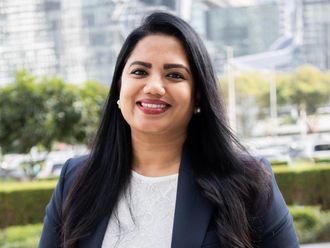Samsung
• S9 is expected to have a 5.8-inch Quad HD OLED “Infinity Display” similar to Galaxy S8 with 4GB of RAM and 64GB of storage capacity. The fingerprint sensor is moved from the side to below the single lens camera. The 3.5mm headphone jack stays on the devices. The 12MP rear camera will have a variable aperture (f/1.5-f/2.4) with optical image stabilisation. The front camera is 8MP with f/1.6 aperture and supports “super slow motion”. It will be powered by 2.8GHz Snapdragon 845 or home-grown Exynos 9810 chip set depending on the region. The voice assistant — Bixby — will get an update. The cameras will be able to record 4K Ultra HD video at 60 frames per second. Both iris scanning and facial recognition will get an update. The speakers are powered by AKG. Battery capacity is 3000mAh.
• The 6.22-inch S9+ is expected to have 6GB of RAM and 128GB of ROM. It will have a new 12MPdual-lens camera set-up on the back and 8MP on the front. Battery capacity is 3500mAh. The chip set is the same as S9. A new version of the Dex docking station is also expected.
LG
• No hardware changes are expected to last year’s model but there is a possibility of Qualcomm’s new 845 chip set on V30S. The 6-inch inch OLED device is expected to have more storage capacity to 256GB ROM and 4GB RAM.
• LG said it is launching a suite of AI technologies. Vision AI analyses objects and recommends the best shooting mode from among eight modes: portrait, food, pet, landscape, city, flower, sunrise, and sunset. The angle of view, colour, reflections, backlighting, and saturation levels are all taken into consideration as the phone analyses images in its database to determine what the camera is focusing on in order to recommend the best setting.
• The Voice AI allows users to run apps and change settings through voice commands alone. Working alongside Google Assistant, the 32 LG-exclusive Voice AI commands up from 23 commands in 2017 Voice AI eliminates the need to search through menu options and allows for direct selection of specific functions.
• The 5.3-inch K10 will have 2GB RAM and 16GB ROM and coupled with 13MP and 8MP cameras.
• The 5.3-inch K10+ will have 3GB RAM and 32GB ROM with 13MP and 8MP cameras.
• The 5.3-inch K10α will have 2GB RAM and 16GB ROM with 8MP and 5MP cameras.
• The 5-inch K8 will have 2GB RAM and 16GB ROM and coupled with 8MP and 5MP cameras.
HMD
• The Nokia 1 is an entry-level device with a 1GB of RAM and 8GB of storage. It is expected to run on Android Go, a stripped down of Android for entry-level phones.
• The 6-inch Nokia 7 Plus is expected to have 4GB of RAM and 64 of ROM. The front camera is expected to sport 16MP and a 12MP + 13MP Zeiss-branded dual-camera at the back. It is also likely to run on Android One. It is expected to be powered by Qualcomm Snapdragon 660 chip set with 64GB sports 4GBof RAM and 64GB of ROM.
• May launch a 4G version of its iconic 3310, available right now only in China.
Sony
• The XZ2 Pro is expected to feature a 5.7-inch 4K OLED display, a first of its kind by a manufacturer. The display will support 18:9 screen aspect ratio, Sony’s first. It is expected to be powered by 2.8GHz Snapdragon 845 processor with 6GB of RAM and 64GB of internal storage. It is expected to run on Android Oreo 8.1, the latest OS. A 12MP rear camera with optical image stabilisation and a 3.5mm headphone jack.
• The Xperia XZ2 is a successor of last year’s XZ1. The 5.5-inch Full HD display with bezel-less display is also expected to be powered by Qualcomm’s latest processor. IT may sport 4GB of RAM and 64GB of storage capacity.











